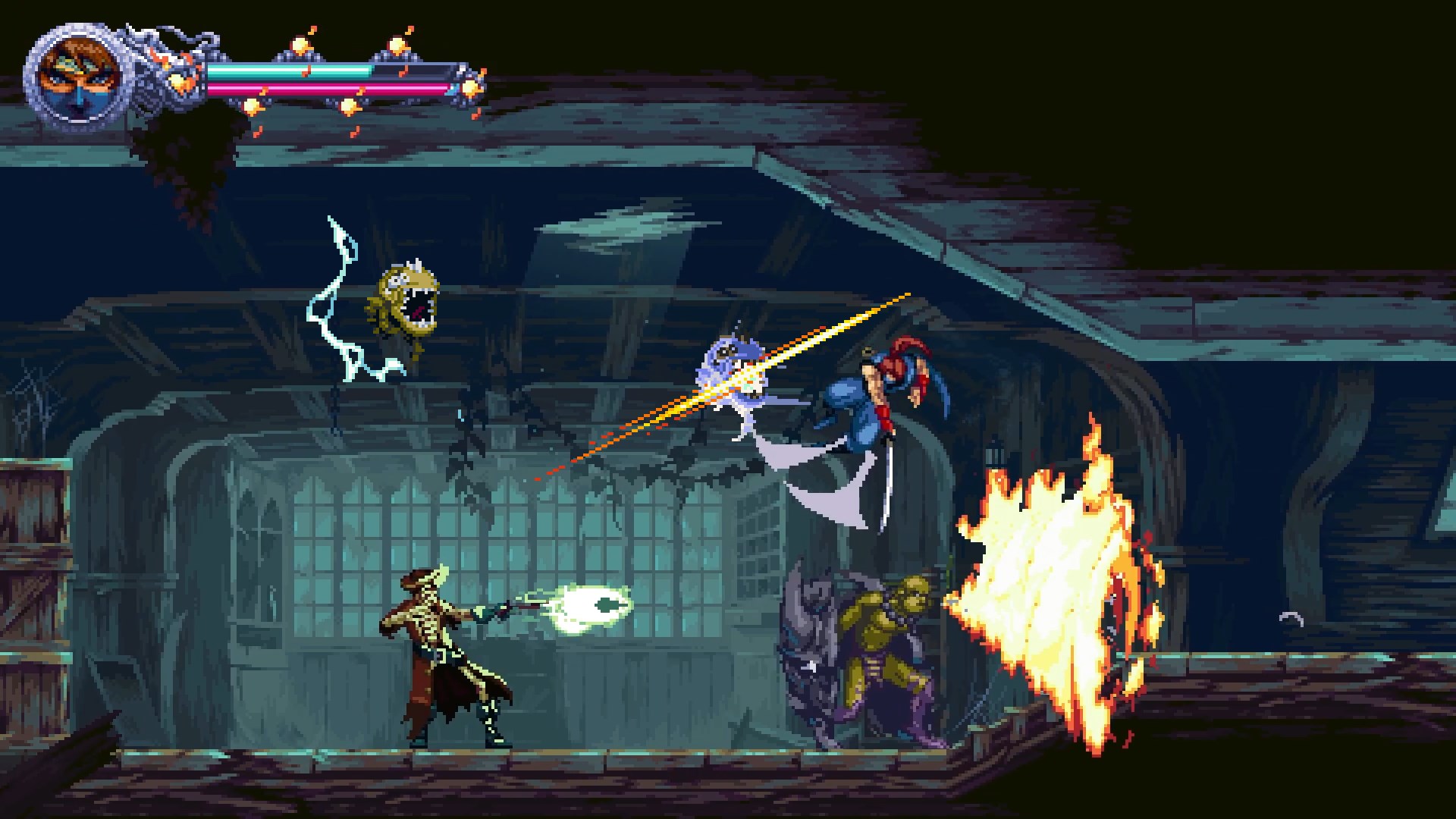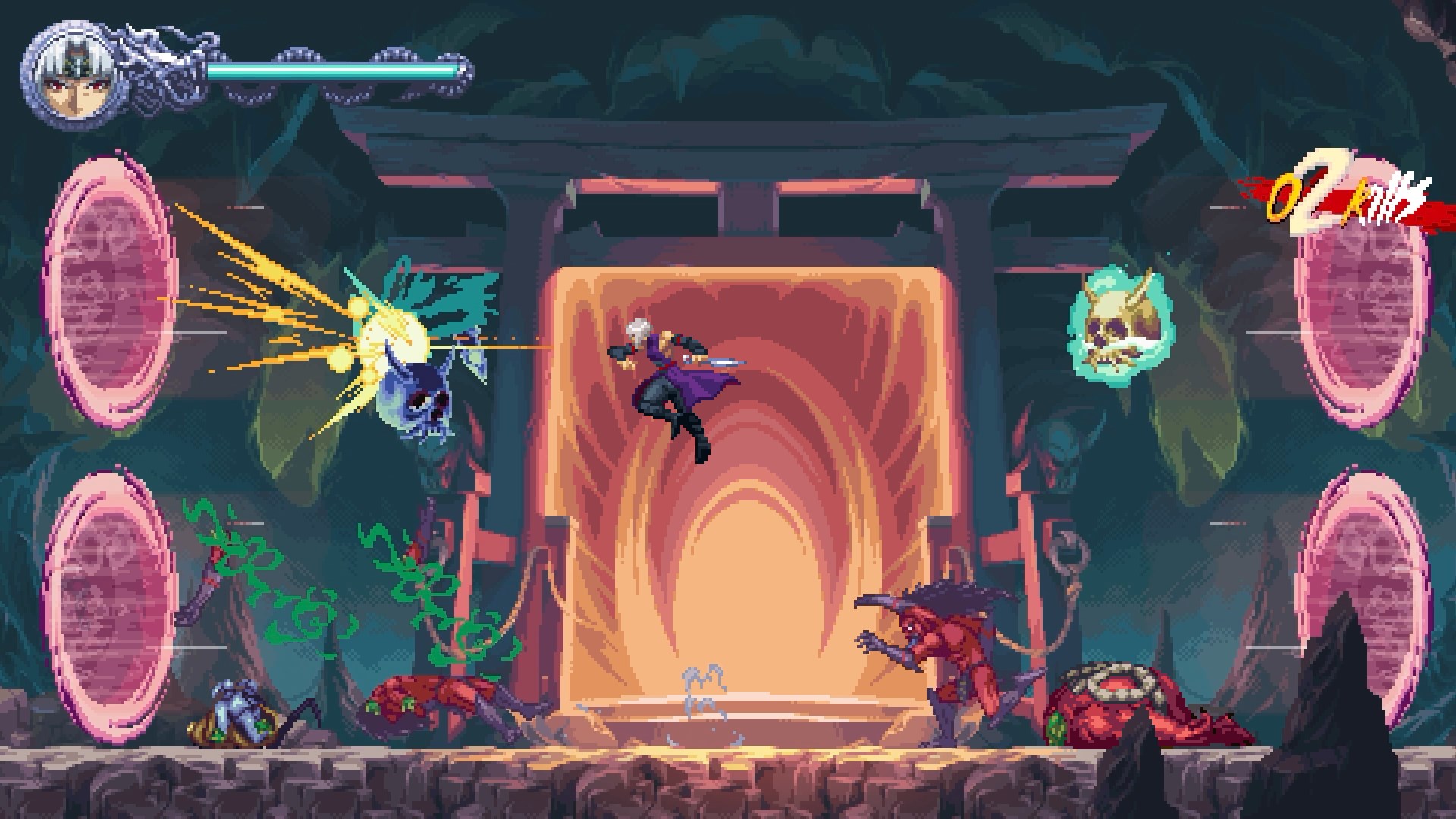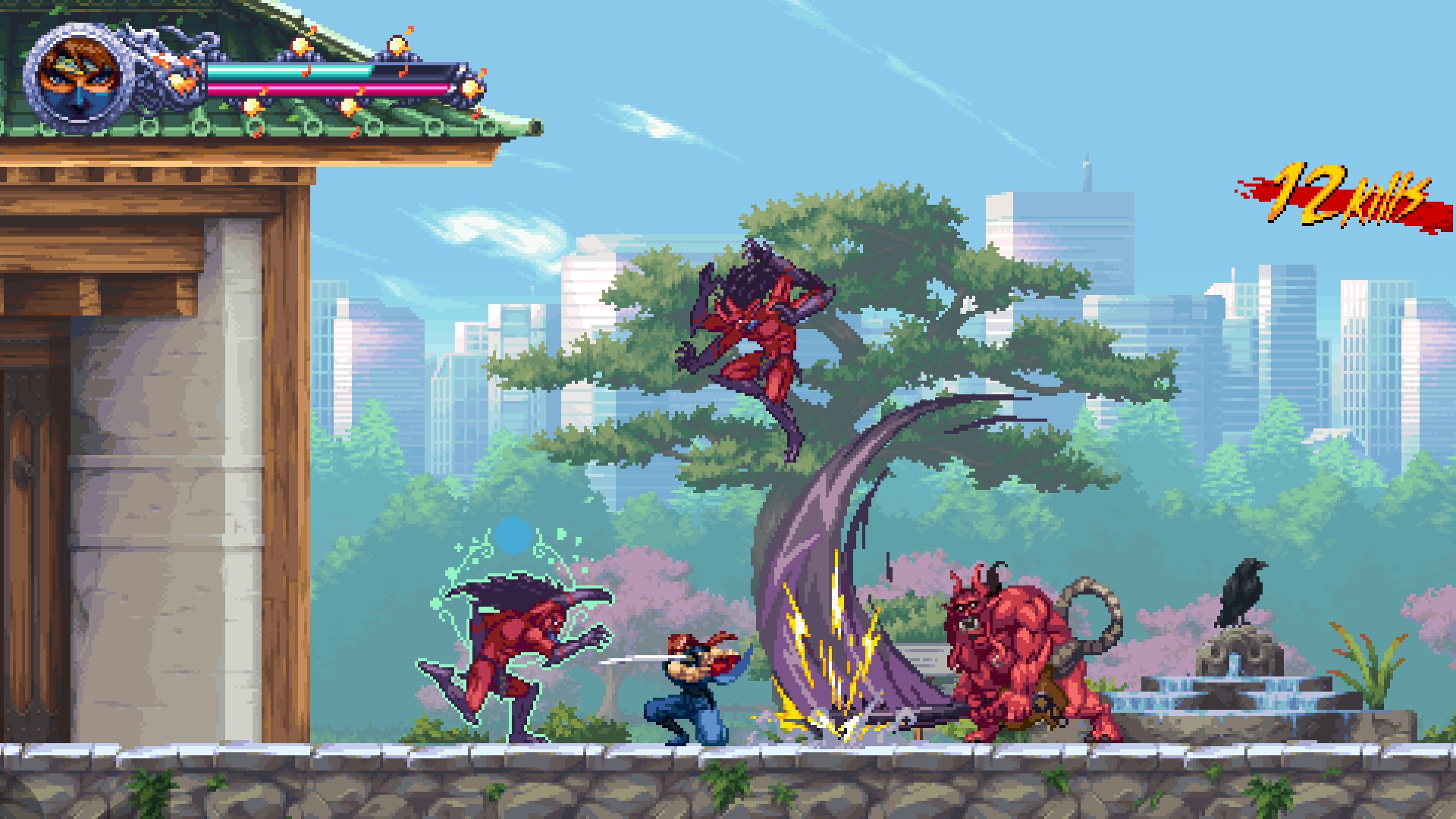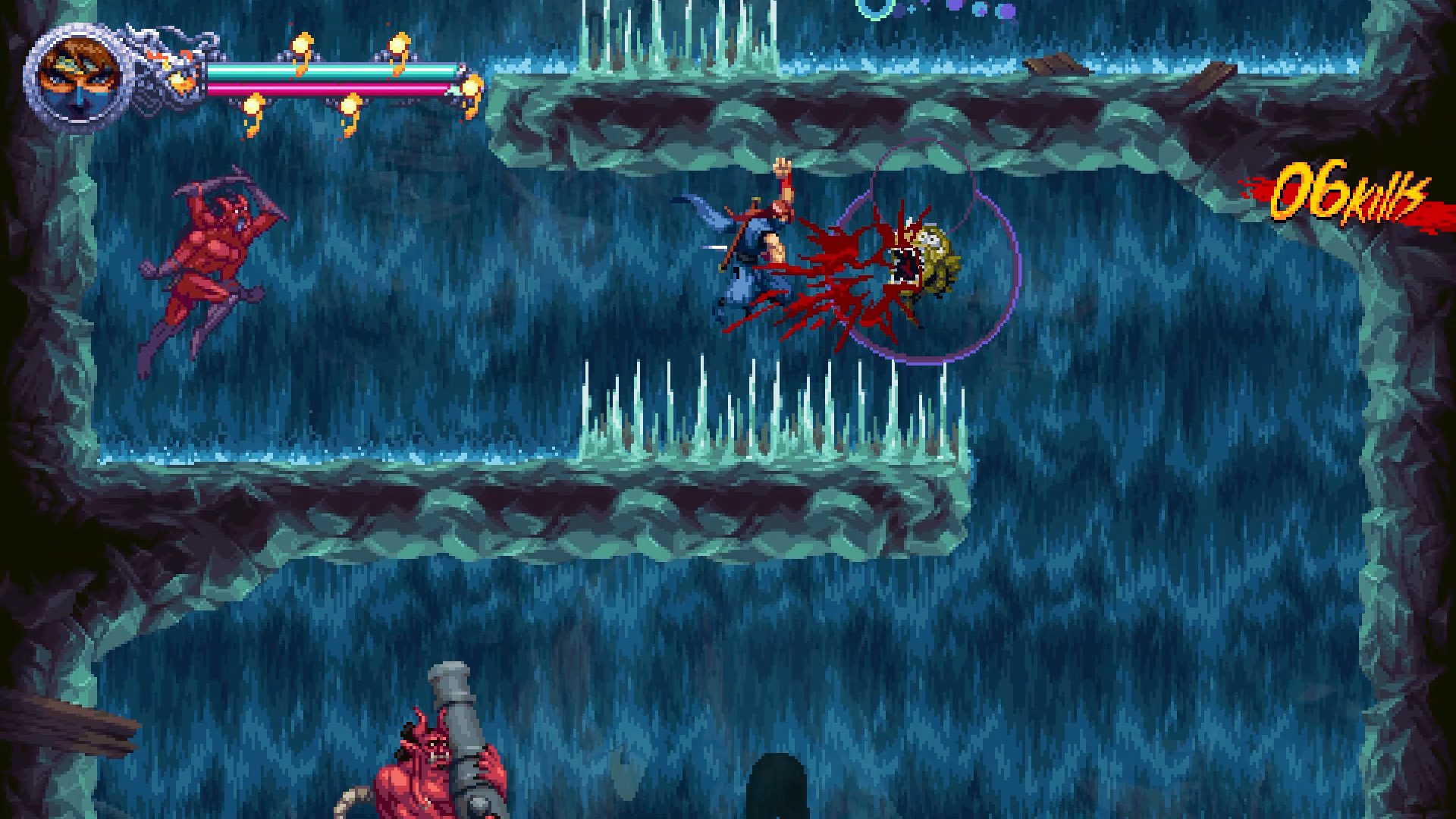Ninja Gaiden: Ragebound tells the story of Kenji Mozu, a ninja from Hayabusa trained by the man himself: Ryu Hayabusa. While Ryu is away in America, the barrier between human and the demon worlds suddenly shatters causing an army of evil entities to decimate the Hayabusa village. Kenji take it upon himself to protect the village. After a disastrous battle, the protagonist finds himself in a desperate situation where he forms an alliance with a member of the sinister Black Spider Clan; the Hayabusa clan’s sworn enemy, to protect the world out of the Demon Lord’s grasp.
Ninja Gaiden: Ragebound brings back the series to its 2D roots from the NES; except with some updated visuals and new mechanics. Kenji can run, jump, wall climb, wall jump and use his trusty sword. Unlike the original trilogy, Kenji doesn’t have a myriad a sub-weapons. Kenji merges with Kumori, the Black Spider ninja, who uses kunais as her weapons; which becomes Kenji’s sub-weapon. Kenij can also bounce off enemies by performing a perfectly timed jump button press as you’re about to land on an enemy.

As you kill enemies, the sub-weapon meter fills up and it allows you so throw kunais at will. The contrast is weaponry plays a vital role in the game. As you’ll notice, Ryu’s color is blue whereas Kumori is purple. When you see an enemy with a blue aura, killing him with the sword will bank in a stronger attack that will allow you to kill bigger enemies with one hit. Same for purple aura enemies; killing them with a shuriken will bank a stronger kunai attack.
While they might feel unnecessary during levels, this unique blue/purple mechanic is highly beneficial against the game’s great boss battles. Bosses will throw things with either aura; if you manage to destroy it and use the attack on the boss, they’ll be temporarily stunned, giving players a chance to mash a few hits in. If you’re a completionist, each level features various challenges to complete such as not falling into pits or beat a boss without getting hit.

In some levels, you’ll come across an artifact that will let Kumori leave Kanji’s body to unlock for the path for the Hayabusa clan member. You’ll need to act fast because she has a timer over her head and if it runs out, you’ll need to start over. Thankfully, you’ll find blue orbs to add more time, but you’ll need to be quick because some of the sequences are absolutely tight in terms of timing.
The game also implements ideas from the 3D Ninja Gaiden series. As you progress and explore the levels, you’ll find collectible such as golden scarabs and white skulls. The scarabs can be used at Muramasa’s shop for passive perks such as being able to get a bit of a health refill when crossing a checkpoint. If you’re struggling, the developer added a few helpful game centric accessibility features such as lowering the damage received or increase meter usage.

The game looks great. The characters and enemies are detailed in all of their pixelated glory, each area represents a unique theme to explore and survive. Also enemy variety changes through each area in order to keep players on their toes. Bosses are one of the game’s best feature; each uniquely designed with their own proper strategy and gruesome look. The soundtrack is fair; the remixed versions of the original trilogy’s tunes don’t hit as well as the original nor does the overall soundtrack; it doesn’t hold a candle to the first NES game’s score.
The game’s first problem is the overall balancing. While the first half of the game, up to level 3-4, the game is a fair, albeit challenging experience where you can adapt in real time. But from 4-1 moving forward, it cranks up the difficulty up to 1000 with some questionable level design. Also the blue/purple attack is just annoying as often times, the enemy with the colored aura will be behind the big tough enemy blocking your path; might as well mash through the bigger enemy or just jumping over it.

On its own, NINJA GAIDEN: Ragebound is an enjoyable (at least the first half) fast-paced 2D action platformer. Combat is fast and responsive, the addition of the blue/purple mechanics is an original game feature. But the overall balancing will possibly turn off some gamers; I’m a huge NG fans and was looking forward to this one, but maybe I was hyping too hard, because in the end, I was disappointed and irritated with absolutely no interest of replaying it, unlike previous Ninja Gaiden games (I lost count on how many times I finished Dark Sword of Chaos).
Overall
-
CX Score - 75%75%
Summary
Pros
- First half of the game is perfectly balanced
- Great boss battles
Cons
- Second half of the game is poorly balanced/designed
- Blue/purple mechanics feels unnecessary

